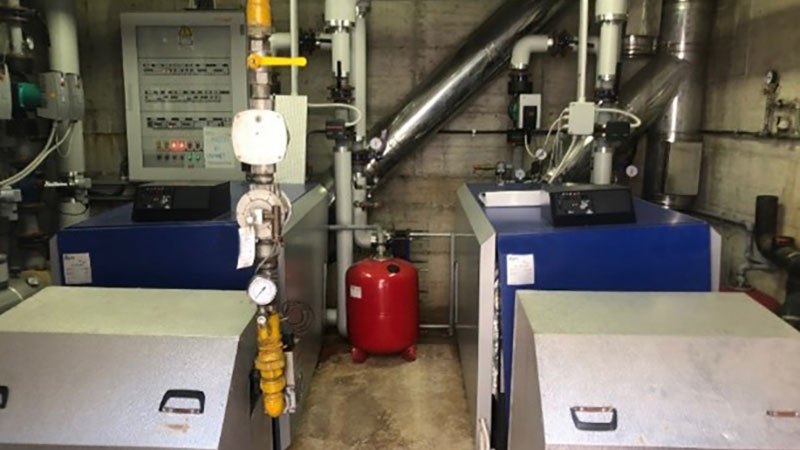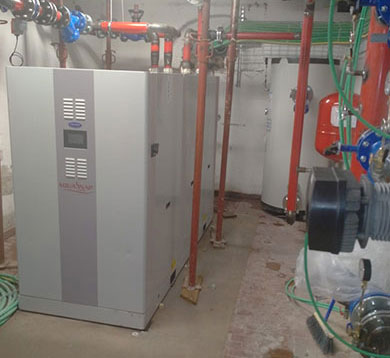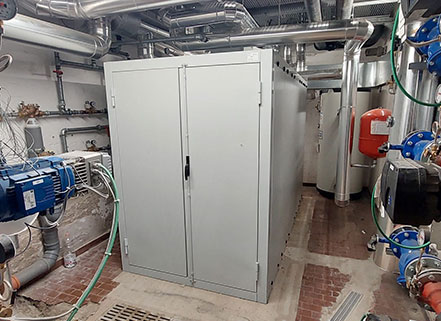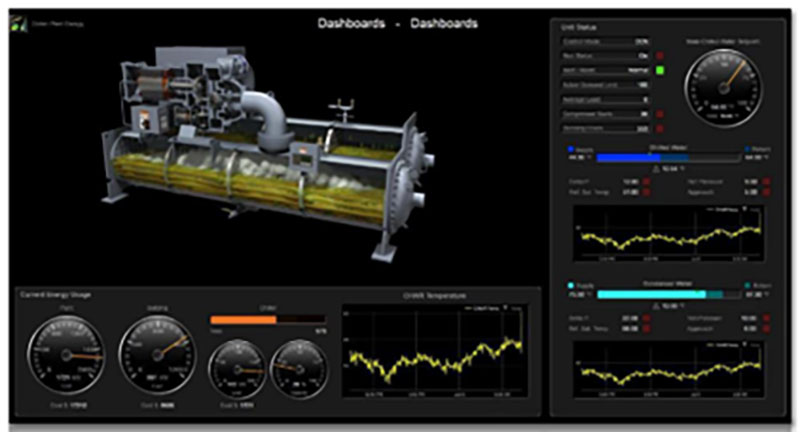
Abitare Società Cooperativa

Project
The process of building redevelopment and decarbonisation certainly represents a major challenge, and one in which heat pump manufacturers can play a key role.
The groundwater in the Milan area makes it possible to install high-efficiency water-cooled units, which is very valuable in terms of saving energy, especially in existing buildings. Over the past two years, Carrier has produced two innovative solutions for improving energy efficiency in buildings. This project involved 19 different housing complexes in northern Milan, with a design team coordinated by the client.
The technological challenges included being able to meet the requirements of the Superbonus 110% initiative and the need to produce hot water for heating and DHW, up to a minimum of 65 °C with geothermal heat pumps equipped with scroll and screw compressors, while limiting the acoustic impact of the interventions. The heat capacity of the units is 180 to 1850 kW, reducing the environmental impact, where possible, through the use of long-term, low-GWP refrigerants, as well as non-flammable A1-type refrigerants. All parts of the units are integrated with optimised management systems, with the help of remote monitoring devices and IoT predictive analysis.
The average improvement went beyond the 5 energy classes, thanks to the combined effect of the new units with the installation of 120,000 m2 of thermal insulation, new triple-glazed windows and the expansion of the photovoltaic park with the installation of an additional 762 kWp.
Challenges
- Replacement of old boilers with modern groundwater heat pumps
- New installation or enhancement of photovoltaic park to reduce electricity consumption
- Installation of thermal insulation
- Replacement of windows and doors with new triple-glazing technology.
Boiler replacement
The first challenge was to design new heat installations in existing environments where the obsolete boilers were replaced by modern groundwater heat pumps.

Before: boiler room

After: boiler room after the intervention with the new heat pump
Heat pump selection
Given that groundwater was available, enabling groundwater source heat pumps to be installed, the choice of the type of heat pump was determined by the power required each site and the minimum temperature to be guaranteed for the production of domestic hot water and heating, which remained conventional with wall radiators.
For required heat outputs of less than 220 kW, a solution was found using multi-scroll compressors with compact units equipped with plate exchangers optimised for heat-only operation with flow temperatures up to 65 °C.
Above this output, it was decided to adopt technology using twin rotary screw compressors providing continuous modulation with shell and tube heat exchangers, which can deliver heat outputs from 300 kW and hot water production up to 70 °C.
| Compressor type | Power range | Maximum hot water production temperature |
|---|---|---|
| Multi-scroll | 90 – 220 kW | 65 °C |
| Screw | 300 – 600 kW | 70 °C |
- Environmentally friendly R-515B - A1 refrigerant
- Noise reduction: acoustic cabinets
- Optimised management system
- 3 x 61AF heat pumps
- 44 x 61WG heat pumps
- 11 x 30XWHPZE heat pumps
“We carried out a thorough selection process when choosing Carrier, interviewing all our installers and designers. Our evaluation was therefore based on different criteria, such as competitiveness in terms of value for money, the level of service offered, the possibility for size modulation, the quality of the after-sales care, machine performance and the overall reputation of the company.
Combining all these aspects which are crucial for us, Carrier proved to be a leading company in its sector and closely aligned with the vision and mission of our co-operative organisation”.
Gian Piero Carezzano
Director
ABITARE Società Cooperativa
Environmentally friendly R-515B - A1 refrigerant
One of the challenges of improving the energy efficiency of existing buildings has been to install new units to replace the old boilers with the following requirements:
- Covering the heat output required by the building
- Equipment must be able to be installed in closed, often confined boiler rooms with limited space available
- Offer innovative solutions which are sustainable in the long term.
To do this, it was crucial to select a new heat pump with refrigerant meeting the following tricky combination of requirements:
- Non-flammability: class A1
- Low environmental impact: low GWP (to comply with European F-Gas regulations)
- High efficiency
- Compliant with the efficiency requirements of the Superbonus initiative.
Noise reduction: acoustic cabinets
As these are interventions in technological installations located close to residential areas, the noise level is of crucial importance. Units with screw compressors, with sound power levels above 90 dBA, require the addition of soundproofing enclosures to bring sound power levels below 70 dBA. Therefore, we selected soundproofed enclosures which guarantee up to -25 dBA noise reduction, with the following features:
- Infill panels made of blind sheet metal on the outside and perforated galvanised sheet metal on the inside, containing rot-proof and non-combustible insulation and soundproofing materials, with a lead sheet on the inside
- Forced suction system comprising an electric fan, exhaust silencer and intake silencer.


Operating parameters
Optimised management system
Using heat pumps with maximum efficiency also requires an optimised management system for the entire heat installation that can enable the heat pumps to work at maximum efficiency. The software and hardware system was developed and integrated within the Building Automation project shared across all the sites involved. The general building management system (BMS) receives data from the heat pumps' primary circuits and optimises their operation co-ordinating with the buildings' secondary systems.